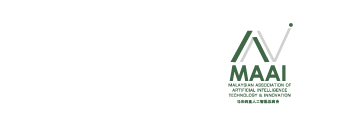In the security and industrial sectors, the resilience of camera housing against harsh conditions is defined by two principal rating systems: the IP (Ingress Protection) Rating and the NEMA (National Electrical Manufacturers Association) Rating.
For applications in demanding environments such as chemical production plants, dusty areas, and environments with high moisture or corrosion risk, a high degree of protection from both standards is required.
For applications in demanding environments such as chemical production plants, dusty areas, and environments with high moisture or corrosion risk, a high degree of protection from both standards is required.
1. IP (Ingress Protection) Rating (International Standard)
The IP Rating, governed by the IEC Standard 60529, is the globally recognised standard that specifies the enclosure's sealing effectiveness against the intrusion of solid objects (dust) and liquids (water).
| Component | Highest Rating Required | Protection Level |
| Solid Particles (Dust) | IP6X (e.g., in IP66, IP67, IP68) | Indicates the enclosure is dust-tight and offers complete protection against the ingress of dust. |
| Liquids (Water) | IP66 to IP69 | Protection ranges from powerful water jets (IP66), temporary submersion (IP67/68), to high-pressure, high-temperature washdowns (IP69/IP69K), which is critical in food and chemical processing. |
2. NEMA Rating (Predominantly North American Standard)
The NEMA Rating is a comprehensive standard, mainly used in North America, which addresses environmental protection along with other factors like mechanical integrity and resistance to icing. Crucially for your requirements, NEMA explicitly addresses anti-corrosion properties.
The most relevant ratings for severe industrial applications are:
- NEMA Type 4X: This is the standard designation for equipment that provides protection against falling dirt, rain, windblown dust, hose-directed water, and is explicitly corrosion resistant (the 'X' denotes corrosion resistance). This is the key rating for coastal or corrosive chemical facilities.
- NEMA Type 6P: Provides the highest protection, including the elements covered by NEMA 4X, but also specifically protects against damage during prolonged or occasional submersion in water.
Specific Requirements for Harsh Environments
| Environment Type | Key Standards Required | Housing Material Recommendation |
| Water / Dust Environment | IP66 or higher (IP67/68/69) and NEMA 4X or 6P. | Polymer or powder-coated metal. |
| Anti-Corrosion Environment (Chemicals, Salt Spray) | NEMA 4X is mandatory. A supplementary rating of IP68 or IP69 ensures liquid resistance. | AISI 316L Stainless Steel is the industrial gold standard for maximum corrosion resistance against chemicals and marine environments. |
| Hazardous Locations (e.g., Flammable Vapours in Chemical Plants) | In addition to IP and NEMA, the enclosure must carry Explosion-Proof / Hazardous Location Certification (e.g., ATEX, IECEx, or UL/CSA classifications) to prevent the camera from becoming an ignition source. | Specialized, pressure-resistant, flameproof housing. |
In summary, for reliable operation in an aggressive industrial setting, procurement should prioritise camera enclosures that achieve IP68/IP69 for ingress protection and NEMA 4X for assured resistance to corrosion.






 BR 28107
BR 28107  VN 15351
VN 15351  US 8372
US 8372  AR 4285
AR 4285  MX 3912
MX 3912  IQ 2439
IQ 2439  GB 2258
GB 2258  CO 2070
CO 2070 





